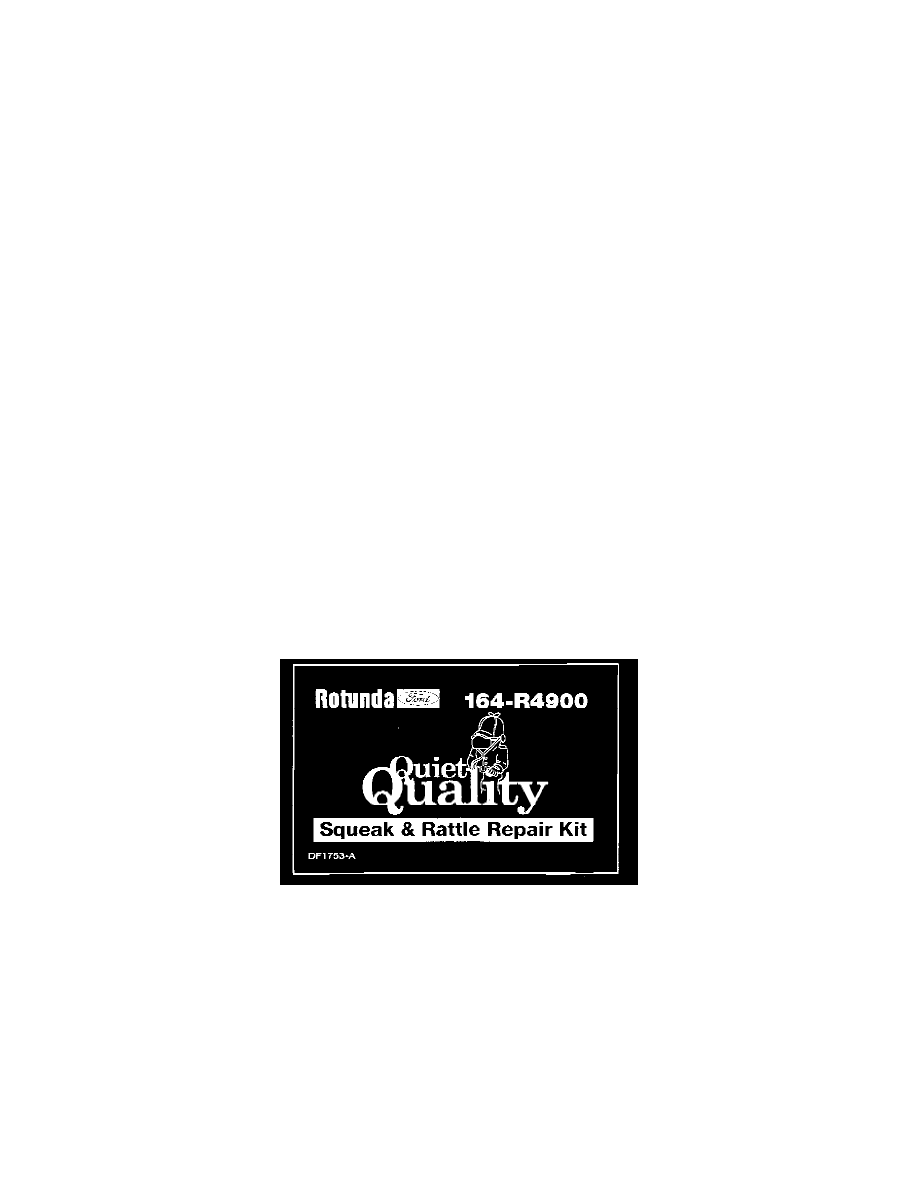Econoline E350 1 Ton V8-5.4L Prop SOHC VIN Z (1998)

engine's crankshaft is the point of reference for vibration diagnosis. Every rotating component will have an angular velocity that is faster, slower, or the
same as the engine's crankshaft. Vibrate software® calculates the angular velocity of each component and graphically represents these velocities on a
computer screen and on a printed vibration worksheet. The following steps outline how Vibrate software® helps diagnose a vibration concern:
^
Enter the vehicle information. Vibrate will do all the calculations and display a graph showing tire, driveshaft and engine vibrations.
^
Print a Vibration Worksheet graph. The printed graph is to be used during the road test.
^
Road test the vehicle at the speed where the vibration is most noticeable. Record the vibration frequency (rpm) and the engine rpm on the worksheet
graph. The point on the graph where the vibration frequency (rpm) reading and the engine rpm reading intersect indicates the specific component
group causing the concern.
-
An EVA or equivalent tool capable of measuring vibration frequency and engine rpm will be needed.
^
Provides pictures of diagnostic procedures to aid in testing components.
ChassisEAR
An electronic listening device used to quickly identify noise and the location under the chassis while the vehicle is being road tested. The chassisEARs
can identify the noise and location of damaged/worn wheel bearings, CV joints, brakes, springs, axle bearings or driveshaft carrier bearings.
EngineEAR
An electronic listening device used to detect even the faintest noises. The EngineEARs can detect the noise of damaged/worn bearings in generators,
water pumps, A/C compressors and power steering pumps. They are also used to identify noisy lifters, exhaust manifold leaks, chipped gear teeth and for
detecting wind noise. The EngineEAR has a sensing tip, amplifier, and headphones. The directional sensing tip is used to listen to the various
components. Point the sensing tip at the suspect component and adjust the volume with the amplifier. Placing the tip in direct contact with a component
will reveal structure-borne noise and vibrations, generated by or passing through, the component. Various volume levels can reveal different sounds.
Ultrasonic Leak Detector
The Ultrasonic Leak Detector is used to detect wind noises caused by leaks and gaps in areas where there is weather-stripping or other sealing material.
It is also used to identify A/C leaks, vacuum leaks and evaporative emission noises. The Ultrasonic Leak Detector includes a multi-directional transmitter
(operating in the ultrasonic range) and a hand-held detector. The transmitter is placed inside the vehicle. On the outside of the vehicle, the hand-held
detector is used to sweep the area of the suspected leak. As the source of the leak is approached, a beeping sound is produced which increases in both
speed and frequency.
Squeak and Rattle Repair Kit
The squeak and rattle repair kit contains lubricants and self-adhesive materials that can be used to eliminate interior and exterior squeaks and rattles. The
kit consists of the following materials:
^
PVC (soft foam) tape
^
Urethane (hard foam) tape
^
Flocked (black fuzzy) tape
^
UHMW (frosted) tape
^
Squeak and rattle oil tube
